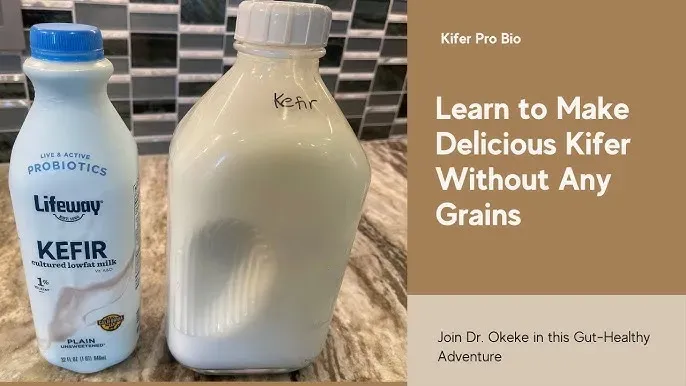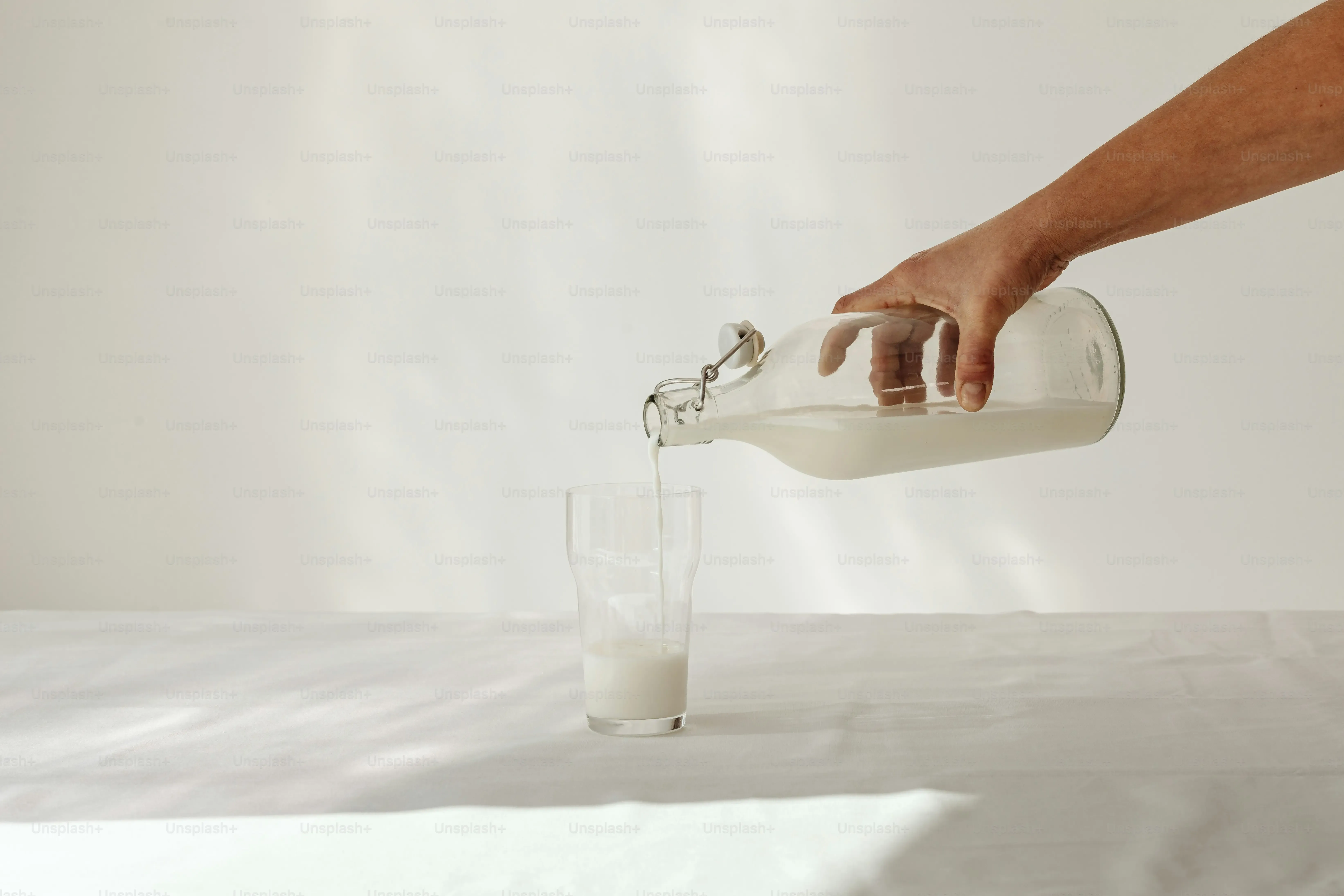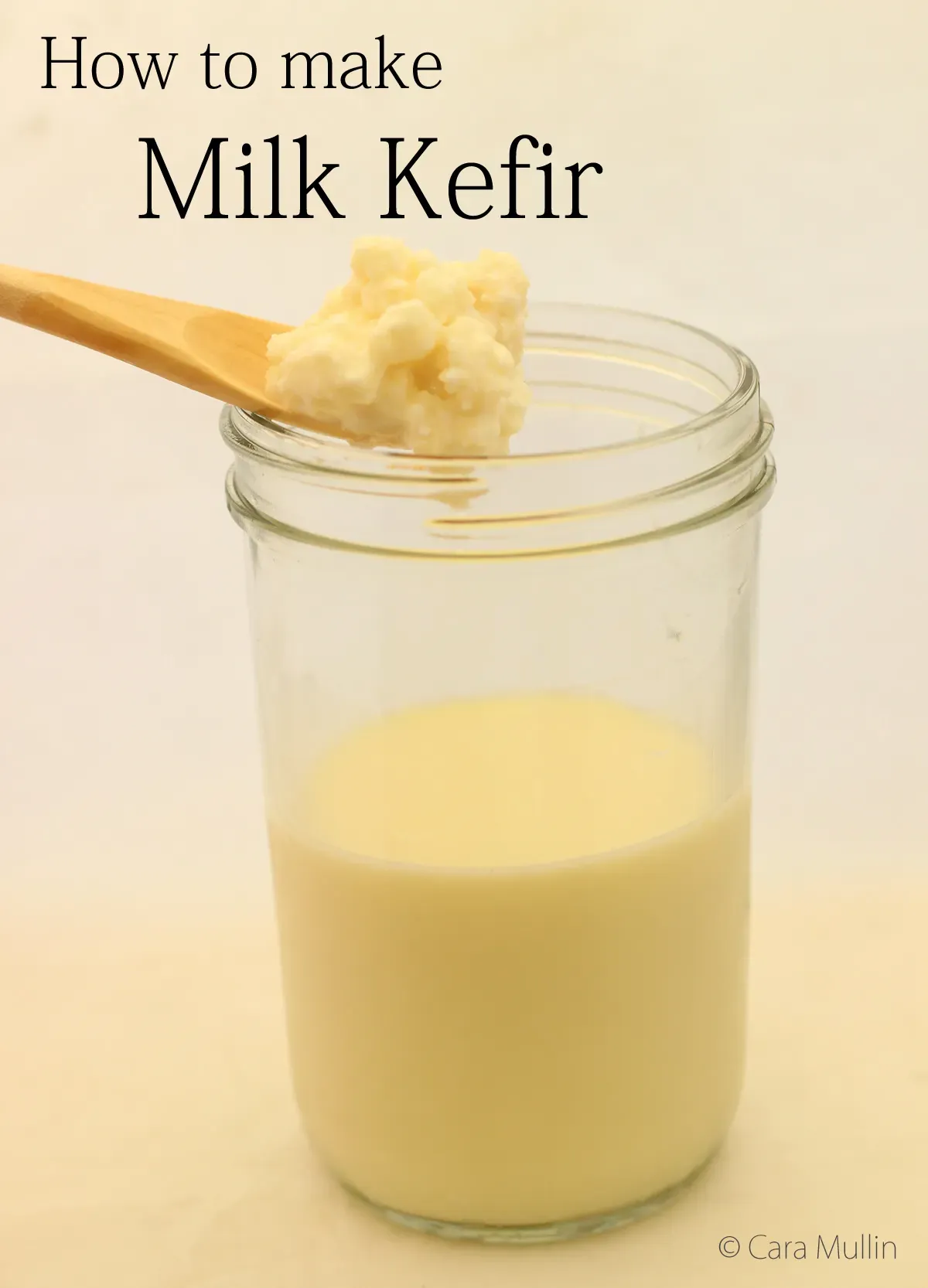Table of Contents
So, you've got those weird, lumpy kefir grains sitting on your counter, ready to turn milk into a tangy, probiotic powerhouse. But maybe you're watching your fat intake, or perhaps you just grabbed the wrong carton at the grocery store. The big question pops into your head: can you make kefir with low fat milk? It's a fair question, and one many home fermenters ponder. You see recipes galore calling for whole milk, leaving you wondering if your lighter option will just result in a watery, sad mess, or worse, kill your precious grains. Let's cut to the chase. Yes, you absolutely *can* make kefir with low fat milk, but there are a few things you should know before you dive in. It's not quite as simple as a straight swap, and ignoring the nuances might leave you with results you didn't expect. This article will walk you through what happens when you use milk with less fat, what kind of texture you can expect, and how to keep your grains thriving long-term, even if they're not swimming in cream.
Can You Make Kefir With Low Fat Milk? The Direct Answer

Can You Make Kefir With Low Fat Milk? The Direct Answer
The Straight Answer: Yes, But...
Let's get right to it because nobody likes beating around the bush, especially when your potential probiotic goodness is on the line. So, can you make kefir with low fat milk? The short, clear answer is: yes, absolutely you can.
Those tiny, hard-working kefir grains don't strictly need the fat content found in whole milk to do their job.
They are primarily focused on consuming lactose, the sugar present in milk, regardless of how much butterfat is floating around.
This means your skim or 2% milk is still a viable food source for the bacteria and yeasts living symbiotically in your grains.
You won't instantly kill your grains or ruin your batch just by opting for a lighter milk.
How the Grains Process Low Fat Milk
Think of the kefir grains as tiny, lactose-eating machines with a side hustle in fermentation.
Their main energy source is that lactose sugar.
When you put them in low-fat milk, they still find plenty of lactose to munch on.
The fermentation process, where the grains convert lactose into lactic acid, carbon dioxide, and a host of other beneficial compounds, happens just as it would in whole milk.
They produce the characteristic tangy flavor and the slight fizz we love in kefir.
The bacteria and yeasts perform their metabolic magic, transforming the milk environment regardless of its fat percentage.
It's less about the richness of the liquid and more about the available sugars.
- Kefir grains eat lactose, not fat.
- Low-fat milk contains lactose.
- Fermentation occurs in low-fat milk.
- Grains can survive and multiply in low-fat milk.
- Expect differences compared to whole milk kefir.
What to Expect When Using Low Fat Milk
Now, while the answer to "can you make kefir with low fat milk?" is a resounding yes, that doesn't mean the end result will be identical to what you get with whole milk.
The fat content definitely plays a role in the final product's texture and sometimes even the taste profile.
Kefir made with low-fat milk tends to be thinner, less creamy, and might separate more noticeably into curds and whey.
This isn't a sign that something went wrong; it's just the nature of culturing a liquid with less fat to emulsify and thicken the final product.
So, if you're used to a thick, yogurt-like kefir, the low-fat version might seem a bit... watery.
But it's still packed with probiotics and all the good stuff you're making kefir for in the first place.
Why Fat Content Impacts Your Kefir Culture

Why Fat Content Impacts Your Kefir Culture
so we established you *can* make kefir with low fat milk. But let's talk about why whole milk is often the go-to and what that fat actually does. Think of milk fat not just as calories, but as tiny little building blocks and a sort of protective layer for your grains. When the grains are fermenting, the fat globules in whole milk get tangled up with the proteins and the byproducts of fermentation, creating that thicker, creamier texture that many people associate with traditional kefir. It provides a richer environment, and while the grains don't eat the fat, its presence seems to contribute to their overall vitality and growth over time. It's like the difference between growing a plant in rich soil versus sandy soil – it can survive in both, but it will likely thrive better in the richer environment.
The Texture and Taste of Kefir Made With Low Fat Milk

The Texture and Taste of Kefir Made With Low Fat Milk
The Not-So-Creamy Reality
Alright, let's talk texture. If you're used to the thick, almost drinkable yogurt consistency of whole milk kefir, prepare for a change. Making kefir with low fat milk, whether it's 2% or skim, results in a noticeably thinner product. It's less viscous, more... well, liquid. The fat globules in whole milk act like tiny thickeners and emulsifiers, helping to bind everything together. Without that fat, the fermented milk doesn't have the same structure. It flows more freely, like buttermilk, maybe even thinner depending on how long you ferment it. Don't freak out; this is totally normal. It's still kefir, just on a diet.
A Tangier Kick? Maybe.
Does the taste change when you make kefir with low fat milk? Sometimes. While the primary flavor comes from the lactic acid produced by the bacteria munching on lactose, the fat content can influence the overall perception of taste. Fat coats your tongue and can mellow out sharp flavors. With less fat, the tanginess might seem more pronounced, maybe even a bit sharper. It's not a dramatic shift for most people, but if you're sensitive to sourness, you might notice it more. Think of it less as a different flavor profile and more as the existing flavors being presented without the creamy buffer.
- Thinner consistency, less creamy.
- More liquid, similar to buttermilk.
- Tanginess might seem more prominent.
- Flavors presented without a creamy buffer.
- Still packed with probiotics and tang.
Separation Station: It Happens
One thing you'll likely see more often when you make kefir with low fat milk is separation. You'll pour it out and notice distinct layers: a thinner, yellowish liquid (the whey) at the bottom, and a thicker, curd-like layer on top. Again, not a disaster. This separation happens in whole milk kefir too, but the fat helps keep things more integrated. With less fat, the solids and liquids separate more readily. Just give it a good stir or shake before drinking, and it will recombine, though it won't magically become thick and creamy like whole milk kefir. It's just the physics of fermentation in a lower-fat environment playing out.
Keeping Your Kefir Grains Happy When Using Low Fat Milk

Keeping Your Kefir Grains Happy When Using Low Fat Milk
Low Fat Milk Isn't Their Dream Vacation
so we've established you *can* make kefir with low fat milk, but let's be real: it's not the five-star resort for your grains that whole milk is. Think of it like this: whole milk provides a richer, more stable environment. The fats aren't just there for creaminess; they offer some protection and a more complex nutritional profile for the entire microbial ecosystem within the grains. While the grains primarily eat lactose, the surrounding environment matters. Using low-fat milk consistently can, over time, potentially stress the grains. They might grow slower, produce less vibrant kefir, or even start to shrink slightly. It's not a death sentence, but don't expect them to be doing backflips in their jar.
Give Them a Whole Milk Spa Day
If you plan to make kefir with low fat milk regularly, it's a good idea to give your grains a break now and then. Consider it a spa day or a nutrient boost. Every few batches, or perhaps once a week or two, ferment a batch using whole milk. This "revitalization" period seems to help the grains perk up, encouraging healthier growth and maintaining their robust activity. It's like sending them on a short, luxurious vacation to recover from the demands of the lower-fat diet. Just one or two cycles in whole milk can make a noticeable difference in how they perform when they go back to their low-fat gig.
- Regularly use whole milk for a batch or two.
- Aim for revitalization every 1-2 weeks if using low-fat milk consistently.
- Watch for signs of sluggishness or shrinking grains.
- This boost helps maintain grain vitality and growth.
Signs Your Grains Need a Change of Scenery
How do you know if your grains are getting tired of the low-fat life? Keep an eye out for a few warning signs. If your fermentation time starts getting significantly longer, meaning it takes 36-48 hours or more to culture a typical batch (say, 1-2 cups of milk with a tablespoon of grains), they might be slowing down. Another sign is if the grains aren't multiplying or growing at all; healthy grains usually increase in mass over time. If they look smaller, mushier, or just generally less vibrant than usual, it's probably time for that whole milk revitalization soak. Don't ignore these signals; happy grains make better kefir.
Troubleshooting Your Low Fat Milk Kefir Batch

Troubleshooting Your Low Fat Milk Kefir Batch
Dealing with Excessive Thinness or Separation
So, you decided to make kefir with low fat milk, and it looks less like a creamy drink and more like milk that's just slightly gone off, with a clear separation happening. First off, take a breath. Thinness and separation are the most common characteristics when culturing low-fat milk. The lack of fat means there's less to bind the proteins and liquids together, so the whey separates from the curds more readily. It's not necessarily a sign of failure; it's often just how it looks. A vigorous stir or shake before you drink it usually integrates it back into a more uniform, albeit still thin, consistency. If it's *excessively* thin, like plain milk, or has a slimy texture, that might indicate your grains need a little more time, the temperature is too low, or perhaps they need that whole milk pick-me-up we discussed earlier.
Common Low-Fat Kefir Issues & Quick Fixes
- **Issue:** Kefir is very thin, like milk. **Fix:** Ferment for a few more hours; ensure room temperature is optimal (68-78°F).
- **Issue:** Significant separation into thick curds and clear whey. **Fix:** This is normal; stir or shake well before consuming.
- **Issue:** Slimy or stringy texture. **Fix:** Grains might be stressed; try a whole milk batch or reduce fermentation time slightly.
- **Issue:** Not tangy, still tastes like milk. **Fix:** Fermentation time is too short; give it more time with the grains.
When Your Grains Seem Unhappy in Low Fat Milk
Sometimes, the issues run deeper than just texture. If you're consistently using low fat milk and notice your fermentation is taking forever – think 48 hours or more for a small batch – or if your grains aren't growing and multiplying like they used to, they might be protesting their diet. Healthy grains are usually plump, creamy white, and increase in size over time. If yours look small, brittle, or have an off-color tint, the low-fat environment might not be providing everything they need for long-term vitality. An off-smell, like overly yeasty or slightly alcoholic (beyond a mild tang), can also be a red flag that the microbial balance is off, often due to stressed grains. This is precisely when you need to intervene with a whole milk "revitalization" batch to give them the nutrients and environment they prefer for optimal health and activity.
Signs Your Grains Need a Whole Milk Spa Day
- Fermentation takes much longer than usual (e.g., >36 hours for 1-2 cups milk).
- Kefir grains are not growing or multiplying.
- Grains appear smaller, mushy, or discolored.
- Finished kefir has an unpleasant, overly yeasty or alcoholic smell.
- The overall quality and tanginess of the kefir has decreased consistently.
The Final Word on Kefir and Low Fat Milk
So, there you have it. While whole milk might be the traditional darling of the kefir world, the answer to "can you make kefir with low fat milk" is a clear yes. Just don't expect the same thick, creamy result you get from a full-fat batch. Your grains will work with less fat, but they do seem to appreciate a richer environment now and then. Think of it like sending them on a spa retreat. If you're committed to low-fat, keep an eye on your grains' activity and consider giving them a periodic soak in whole milk to keep them robust. Ultimately, making kefir with low-fat milk is entirely possible, you just need to adjust your expectations regarding texture and be mindful of your grains' long-term needs.
